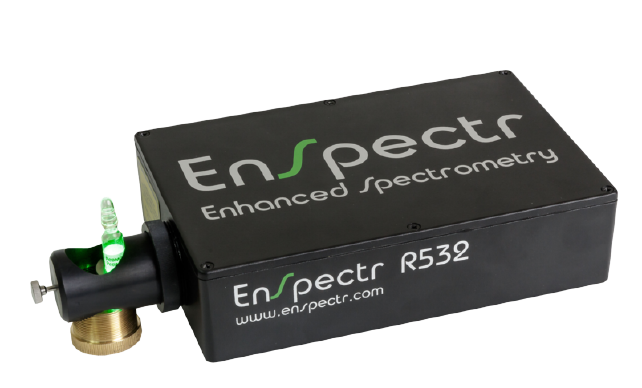Quantitative and qualitative SERS analysisRapid and affordable diagnostics of infectious diseases, especially in cases requiring emergency medical care, remains a challenging issue of healthcare service. The problem calls for development of diagnostic measures ensuring high specificity, rapid analysis, hardware ergonomics, portability as well as high sensitivity.
Surface-enhanced Raman spectroscopy is an ultra-sensitive method of identification of pure chemical compounds whereas clinical samples (blood, serum, fecal extracts, cerebrospinal fluid, saliva, urine, etc.) are complex mixtures of organic and inorganic compounds, biomolecules and microorganisms. Direct detection of markers of infectious diseases by SERS analysis is not possible without application of special approaches to eliminate the background (nonspecific) signal. The problem is solved using bioaffinity interactions and SERS reporters as well as label-free techniques.

Enhanced Spectrometry Inc. (EnSpectr) has developed a technological unit composed of a portable analytical complex based on resonant 532 nm laser excitation and activated SERS substrates or colloid nanoparticels for rapid SERS measurements of various low and ultra low concentration analytes.
SERS-active substrates can be used in different forms: as wafers with various combinations of dielectric and metallic layers (SERS substrates); colloid nanoparticles, dimerized nanoparticles, or core/shell nanoparticles. The active layer of all SERS-active substrates is represented by nanostrucures of noble metals, mainly silver. Silver nanospheres marked with SERS reporters and covalently bound to antibodies that selected to match the identifiable antigen have found wide application in SERS immunoassay. On formation of an immune complex and washing-off the unbound components it is detected by the SERS analyzer.
EnSpectr SERS (Surface Enhanced Raman Scattering) Substrates enable identification of various chemical compounds in extremely low quantities (up to several molecules) based on the effect of giant Raman resonance. EnSpectr SERS Substrates can be used in everyday chemical analysis as well as in fundamental scientific research. Here are some examples of SERS applications:
- Research of cells, tissues, DNA
- Bioscience and pharmaceutical research
- Product authentication with spectral markers technology, etc.
- Detection of prohibited substances
EnSpectr SERS Substrates can be used for identification of micro doses (from several hundred to several thousand molecules) of organic and chemical substances in applications ranging from composition analysis of biological fluids (urine, sweat, saliva, etc.) and to identification of organic admixtures in air and water.
EnSpectr SERS Substrates are supplied in packs of 4 rectangular substrates sized 4 mm x 20 mm with two active Ø 4 mm SERS zones (reference and analyte zones); each SERS substrate in a separate vacuum capsule. The minimum order is 2 packs.
* — all substrates are passivated with a thin transparent dielectical layer. Useful for:
1) using as a biosensor for sorption;
2) treatment with ligands, antibodies, etc. (further acceptor deposition is required);
3) chemical treatment of substrate surface is required;
4) substances whose thickness does not exceed 30 nm
** Stability + — substrates allow treatment in different chemical environments.
Stability — — substrates do not allow treatment in different chemical environments. Only deposition and drying of water, alcohol or chloroform solutions is feasible.
EnSpectr SERS R532 Raman Analyzer
The EnSpectr SERS® is a unique instrument that combines the advantage of a portable probe system with the performance of a highly specified laboratory instrument. It is a perfect choice for SERS analysis when acquisition of high quality data averaged throughout a large area of an active SERS substrate zone is essential.


